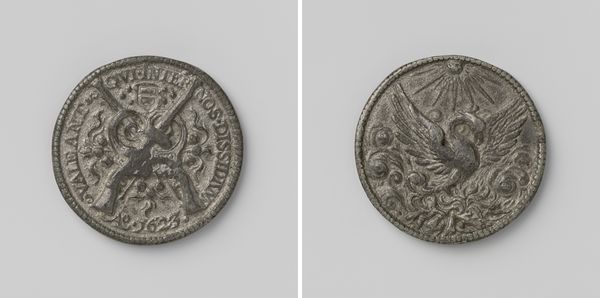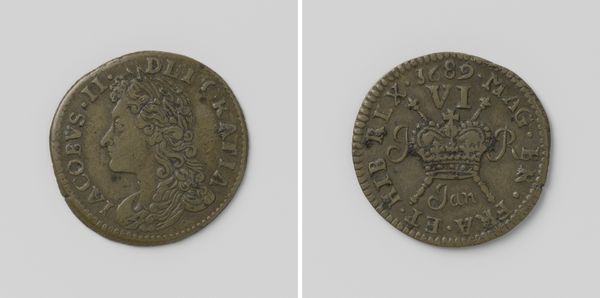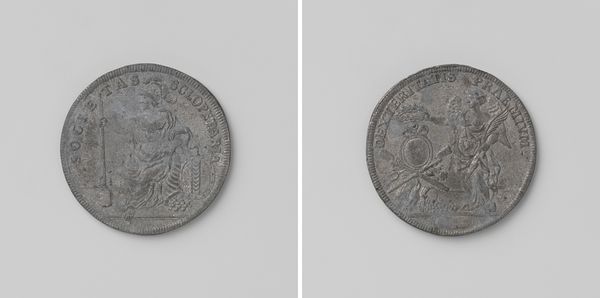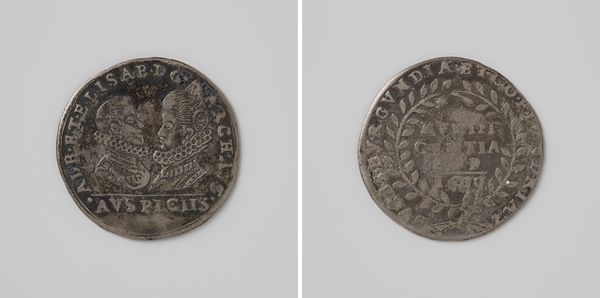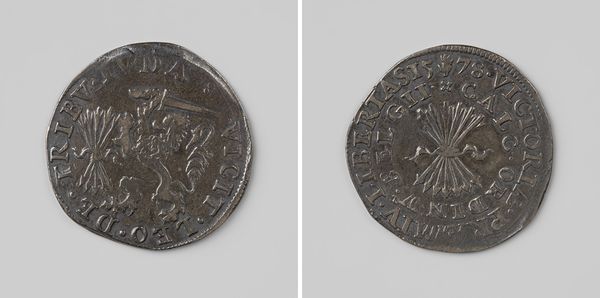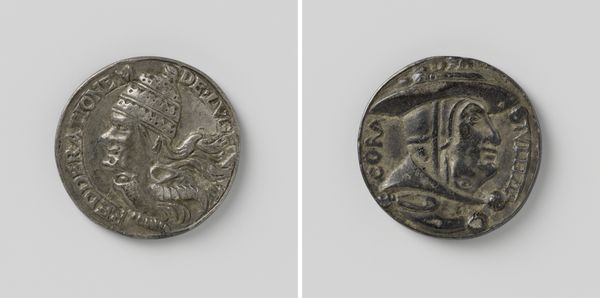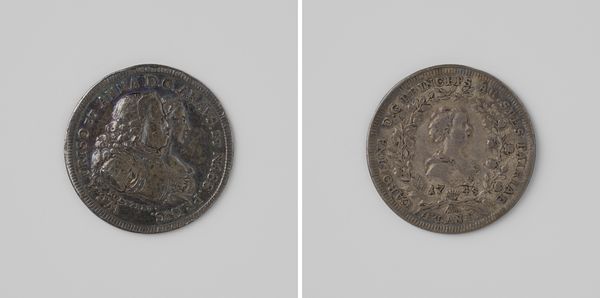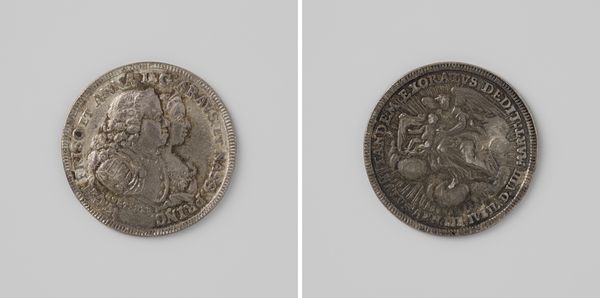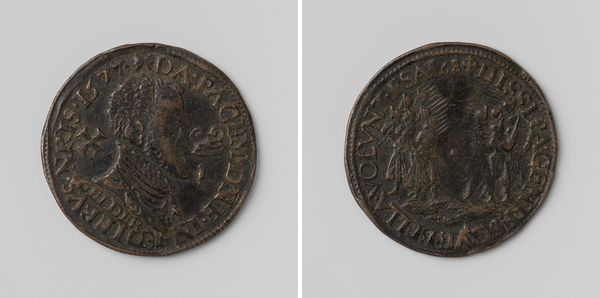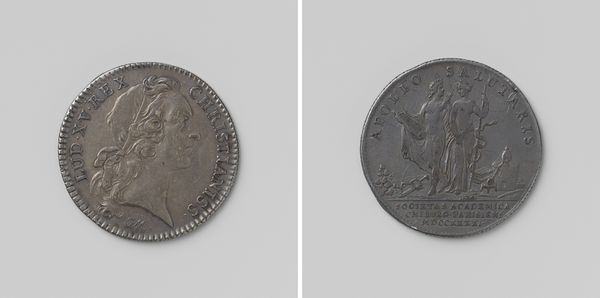
metal, sculpture
#
portrait
#
metal
#
sculpture
#
11_renaissance
#
sculpture
#
history-painting
Dimensions: diameter 2.8 cm, weight 7.69 gr
Copyright: Rijks Museum: Open Domain
Curator: This silver sculpture, dating back to 1497, is a medal by Francesco di Francia, portraying Ercole I d'Este, the Duke of Ferrara. Editor: Its muted sheen and rather flat perspective make it seem distant and formal, though its modest size grants a surprising sense of intimacy, like holding a moment in history in your palm. Curator: Indeed. The method of production—the crafting of metal—speaks volumes about the society from which it came. Medals such as these were not simply decorative objects. They served as potent symbols of power and status in Renaissance courts, functioning almost like miniature, portable billboards. Think about the labor involved. The mining and refinement of the metal, the skill needed for engraving... Editor: And consider the implied social contract inherent in commissioning such a piece. This wasn’t just about aesthetics; it was an explicit articulation of dynastic ambition during a period rife with political upheaval and shifting alliances. How might those looking at this at the time understand Ercole's self-presentation? Curator: That’s where it gets even more interesting. Turning it over, you’ll see a depiction of Hercules battling the Hydra, his namesake. Editor: The Hydra – a serpentine symbol of chaotic uprising, echoing themes of identity, otherness, and dominance during the Renaissance period, often portrayed as a creature that must be eradicated to protect the social order. It reads as propaganda in our contemporary view, but at the time was consumed differently. Curator: Exactly. The choice of silver as a medium certainly emphasizes its monetary and symbolic value within that aristocratic context. Silver pieces served multiple functions as heirlooms or currency, intertwining political propaganda, personal wealth, and lineage into something both aesthetic and functional. Editor: Right. Reflecting upon Ercole's role within patriarchal structures offers nuanced layers; was it subversion, preservation, or blind conformity? That the material remains intact after all these centuries grants power to consider the values that transcend epochs alongside values which reflect only historical structures of oppression. Curator: In essence, viewing it through the lens of materials and labor brings us back to those initial questions of social structures. This coin holds more complexity than one may have first considered, yes? Editor: Definitely. Thinking through these themes helps us better consider not only what we see but what has been deliberately presented and what has remained unsaid for centuries.
Comments
No comments
Be the first to comment and join the conversation on the ultimate creative platform.
